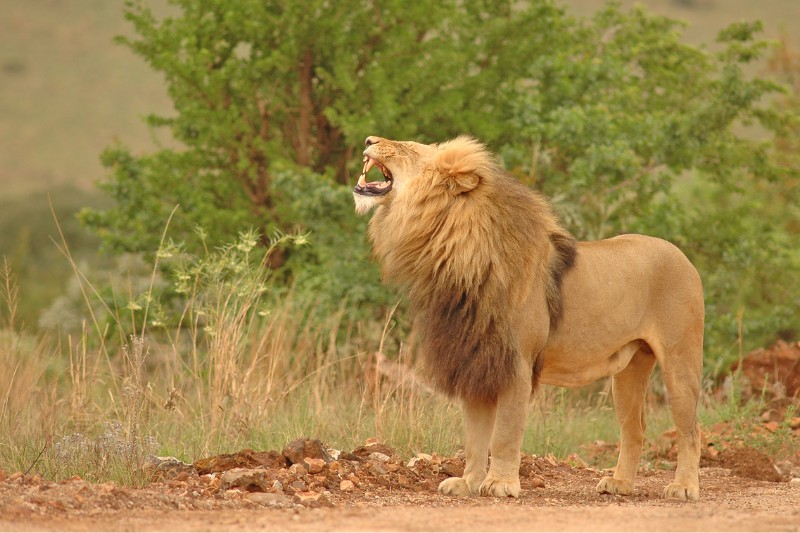
Lions once roamed across much of Africa, Europe, and Asia. Today, they’ve lost over 90% of their historic range, and only around 20,000 wild lions remain. But it’s not all bad news. Across Africa, conservationists, local communities, and governments are testing—and scaling up—strategies that are helping lions hold the line.
In this final post of our lion series, we explore what’s working, where the challenges remain, and how people are helping secure a future for the king of beasts.
1. Protected Areas: The Lion’s Strongholds
Most surviving lions live inside or around national parks, conservancies, and game reserves. These protected areas offer:
- Prey-rich habitat
- Anti-poaching patrols
- Reduced human-wildlife conflict (in some cases)
But only about 56% of Africa’s lions are inside formal protected areas. To survive long term, lions need space beyond park boundaries.
2. Community Conservancies: Sharing the Land, Sharing the Benefits
Some of the most promising models involve community-run conservancies, especially in East Africa. Examples:
Namunyak Conservancy (Kenya):
- Locally managed grazing zones and wildlife areas
- Lion numbers rebounding thanks to reduced conflict and poaching
- Community members work as rangers, trackers, and tourism hosts
Niassa Reserve (Mozambique):
- Focus on community engagement + tech tools like lion collaring
- Human-lion conflict reduced with mobile alert systems that warn of lion movements
In these systems, communities benefit through revenue sharing, jobs, and livestock protection programs—creating an incentive to live with lions, not against them.
3. Conflict Mitigation: Saving Lions by Saving Livestock
Lions often kill livestock, especially during droughts or near park boundaries. Retaliatory killings are a top cause of lion mortality. Solutions include:
- Mobile bomas: Reinforced night pens that move with herders and reduce nighttime attacks
- Lion Guardians (Kenya & Tanzania): Maasai warriors turned conservationists who track lions, mediate with communities, and prevent revenge killings
- Compensation & insurance schemes: Some regions offer payments for verified livestock losses, reducing the need for retaliation
Result: In areas with these tools, lion killings have dropped by over 80%.
4. Collaring and Tracking: High-Tech Conservation
Collaring lions with GPS or satellite-enabled devices helps researchers:
- Monitor pride movements
- Detect poaching threats
- Alert nearby communities in real-time
Projects like Panthera’s Furs for Life and Lion Landscapes use this data to create “coexistence maps” that guide livestock herding and anti-poaching patrols.
5. Law Enforcement and Anti-Poaching Efforts
Though lions aren’t targeted as often as elephants or rhinos, they still face threats from:
- Snaring for bushmeat (which accidentally catches lions)
- Poisoning (after livestock killings)
- Illegal trade in lion bones and body parts
Successful anti-poaching efforts often combine:
- Well-trained rangers
- Community intelligence networks
- Drones, camera traps, and real-time data sharing
6. Rewilding and Translocations
In places where lion populations have disappeared or are genetically isolated, conservationists are moving lions from one reserve to another to rebuild healthy populations.
Examples:
- Akagera National Park (Rwanda): Lions reintroduced in 2015 after 20 years of absence
- Zambia and Malawi: Translocations helping establish new prides in restored parks
These projects require careful genetic planning, community involvement, and long-term monitoring—but they offer hope for regions where lions were wiped out.
7. Tourism That Gives Back
Responsible ecotourism creates income for conservation efforts and local communities. It’s one of the few sustainable industries that depends on keeping lions alive.
Tourist dollars help fund:
- Ranger salaries
- Conservation research
- Education programs
- Community infrastructure
But tourism must be ethical—not intrusive or exploitative—and benefit locals directly to be truly sustainable.
Final Thoughts: Coexisting With the King
Saving lions isn’t about locking them away in far-off parks. It’s about creating a living landscape where wild predators and people can share space. It means understanding their behavior, respecting their role, and supporting the people who live alongside them every day.
The future of lions will be written not just by scientists and rangers—but by pastoralists, farmers, schoolchildren, and tourists. With the right mix of tools, trust, and tenacity, we can ensure that the lion’s roar echoes across Africa for generations to come.
Missed a post in the series? Catch up on:
- Lion Pride Dynamics
- Male Lion Coalitions
- Lion Cubs and Survival
- How Lionesses Hunt
- Lions vs. Hyenas
- Lions and Drought
Disclaimer: This blog post is for edutainment purposes only and may not be entirely accurate.






